901871
PBDTS-TDZ
Synonyme(s) :
PCE-13, PCE13, Poly[1,3,4-thiadiazole-2,5-diyl(3-octyl-2,5-thiophenediyl)[4,8-bis[(2-butyloctyl)thio]benzo[1,2-b:4, 5-b′]dithiophene-2,6-diyl](4-octyl-2,5-thiophenediyl)]
About This Item
Produits recommandés
Description
Band gap: 2.09 eV
Forme
powder
Poids mol.
average Mn >30000
average Mw >60000
Solubilité
THF: soluble
chlorobenzene: soluble
chloroform: soluble
dichlorobenzene: soluble
soluble (1,2,4-trimethylbenzene)
toluene: soluble
xylene: soluble
λmax
510 nm±10 nm (Solution)
Énergie orbitale
HOMO -5.39 eV
LUMO -2.8 eV
PDI
<2.5
Catégories apparentées
Application
Code de la classe de stockage
11 - Combustible Solids
Classe de danger pour l'eau (WGK)
WGK 3
Point d'éclair (°F)
Not applicable
Point d'éclair (°C)
Not applicable
Faites votre choix parmi les versions les plus récentes :
Certificats d'analyse (COA)
Vous ne trouvez pas la bonne version ?
Si vous avez besoin d'une version particulière, vous pouvez rechercher un certificat spécifique par le numéro de lot.
Déjà en possession de ce produit ?
Retrouvez la documentation relative aux produits que vous avez récemment achetés dans la Bibliothèque de documents.
Articles
Professor Chen (Nankai University, China) and his team explain the strategies behind their recent record-breaking organic solar cells, reaching a power conversion efficiency of 17.3%.
Notre équipe de scientifiques dispose d'une expérience dans tous les secteurs de la recherche, notamment en sciences de la vie, science des matériaux, synthèse chimique, chromatographie, analyse et dans de nombreux autres domaines..
Contacter notre Service technique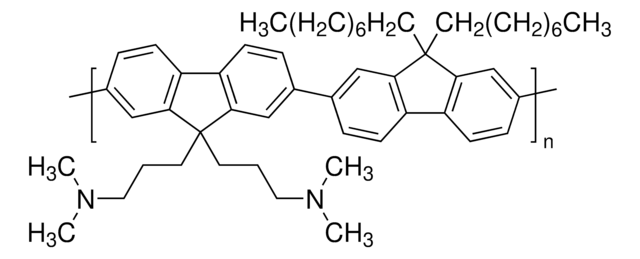
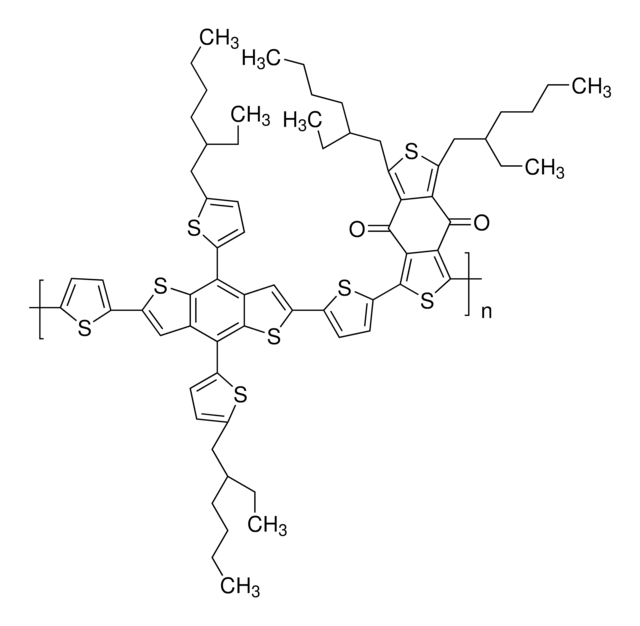
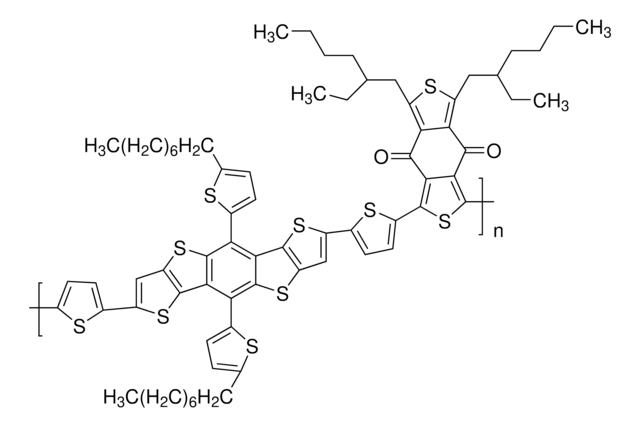
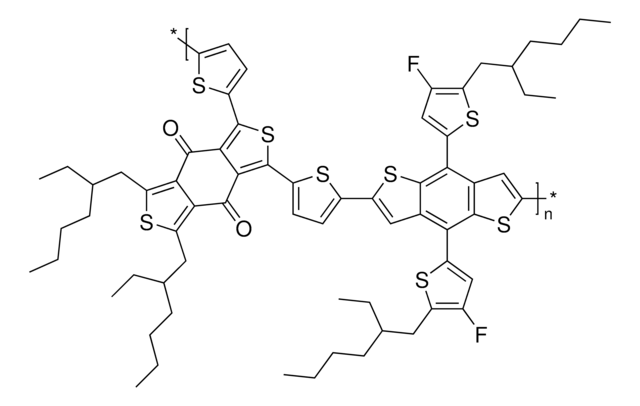


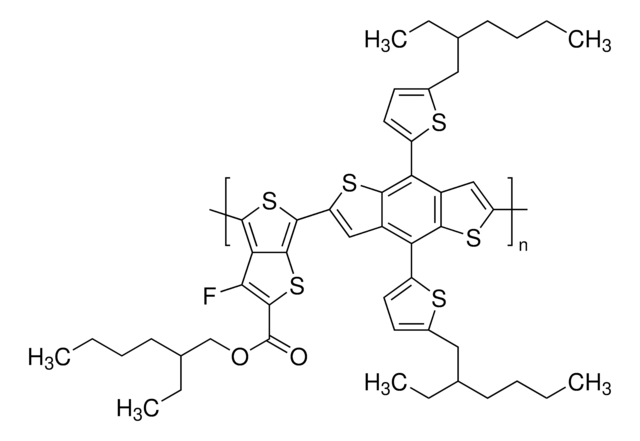
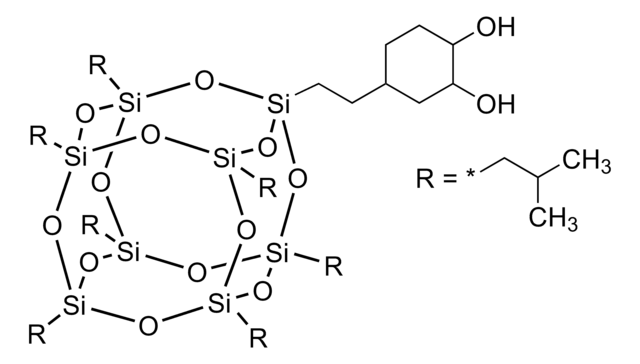

![Poly[(9,9-di-n-octylfluorenyl-2,7-diyl)-alt-(benzo[2,1,3]thiadiazol-4,8-diyl)] average Mn ≤25000](/deepweb/assets/sigmaaldrich/product/structures/428/661/1c4ebb98-9d51-48c0-96c7-e556ca425aa4/640/1c4ebb98-9d51-48c0-96c7-e556ca425aa4.png)